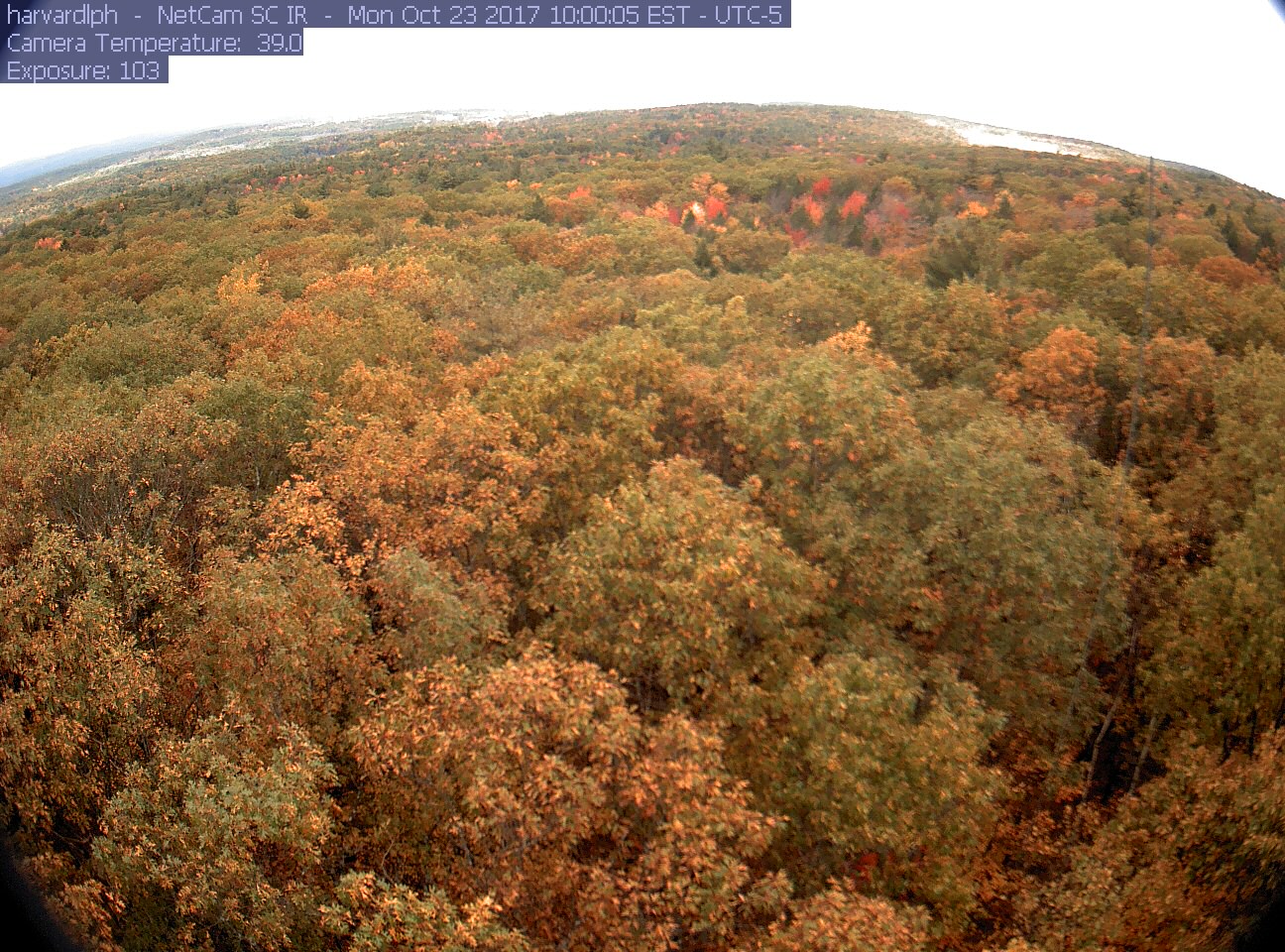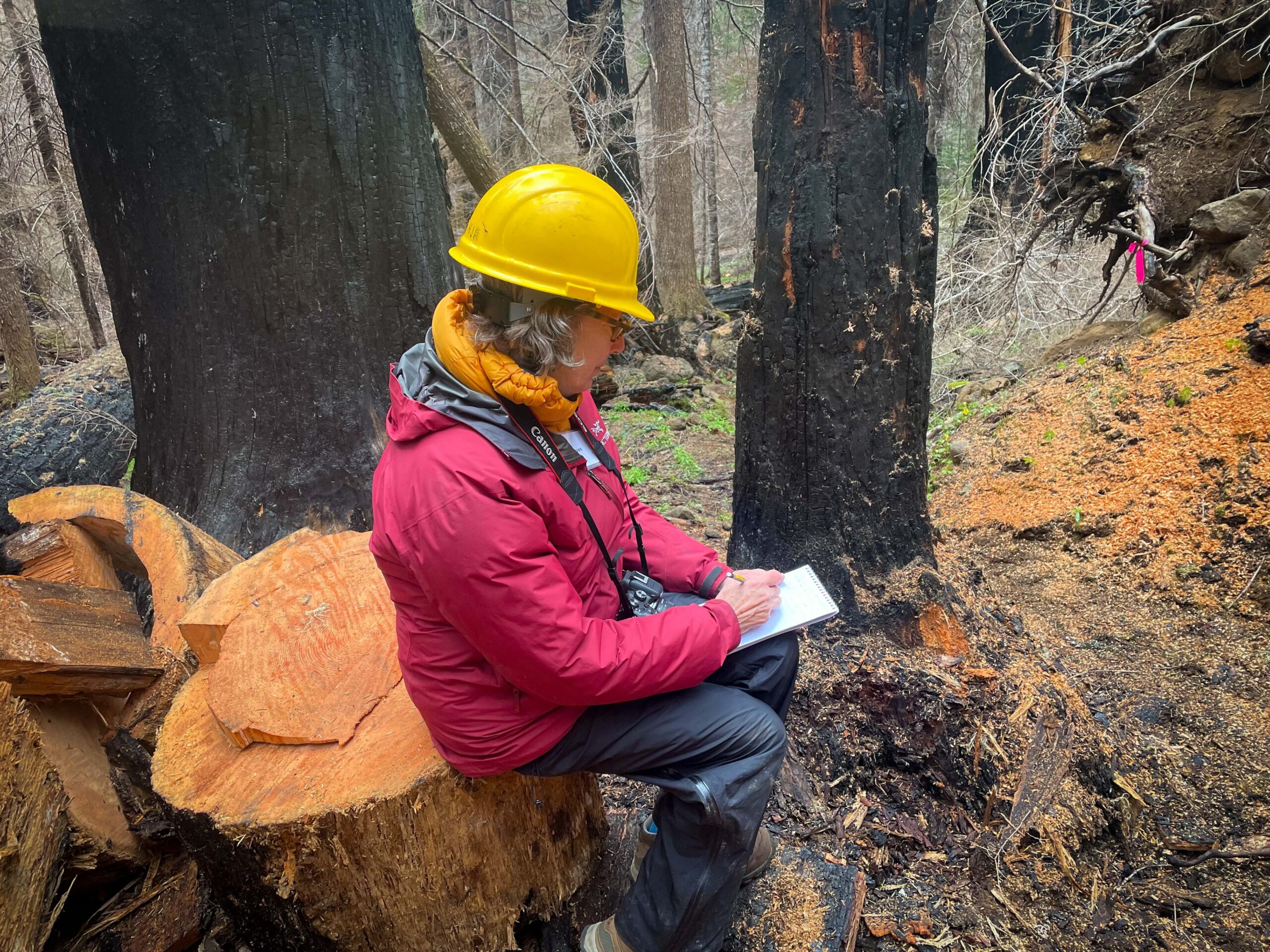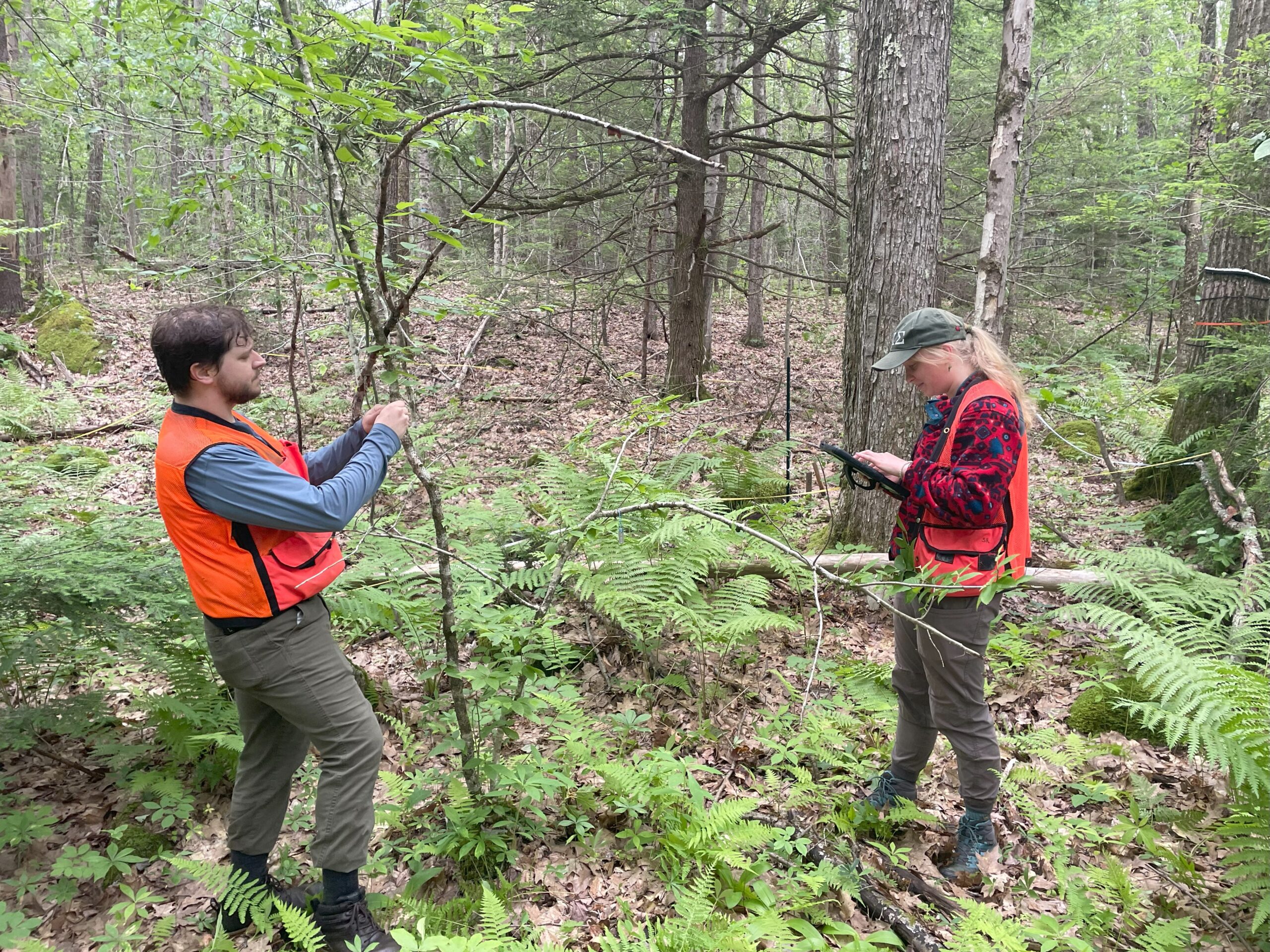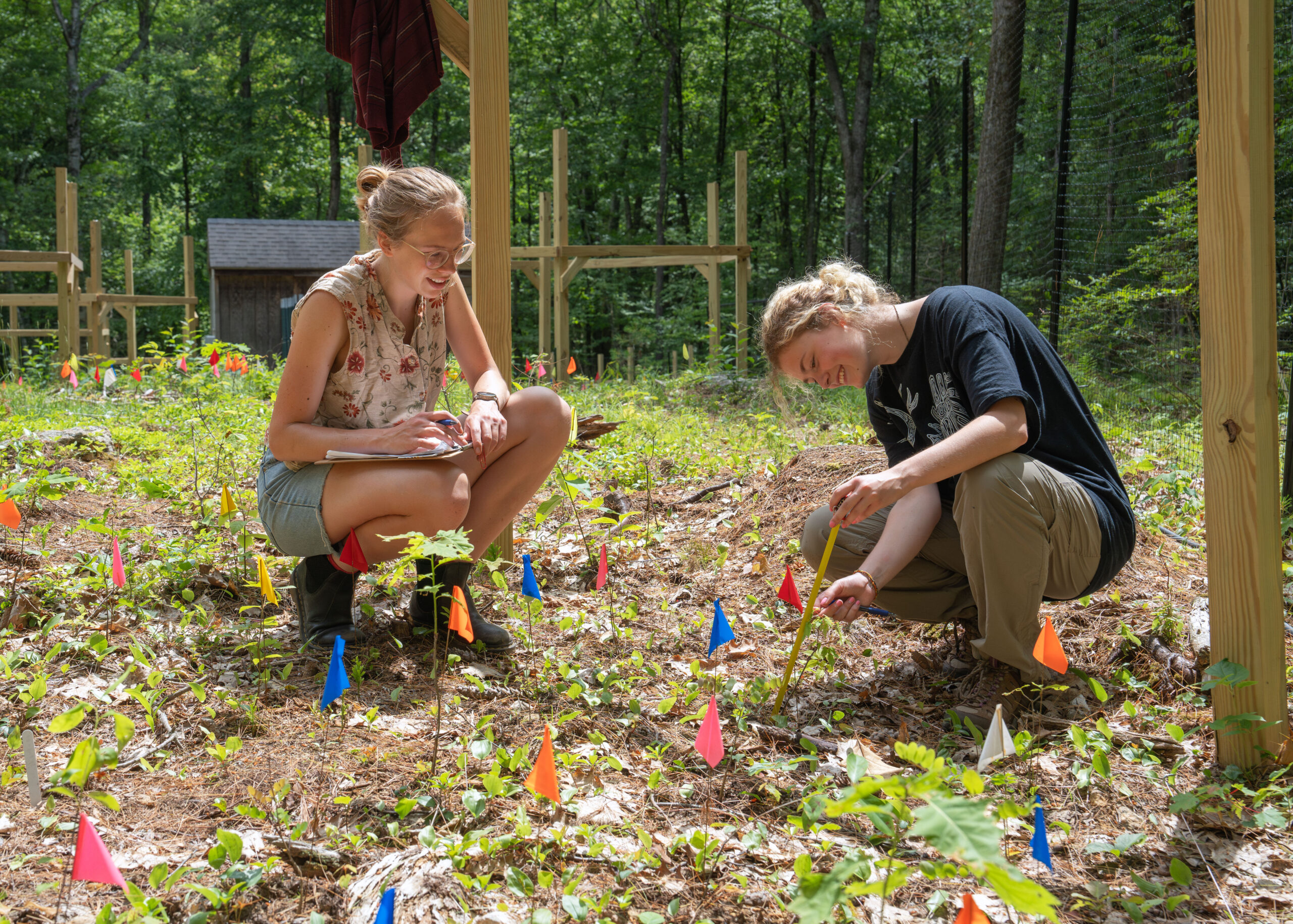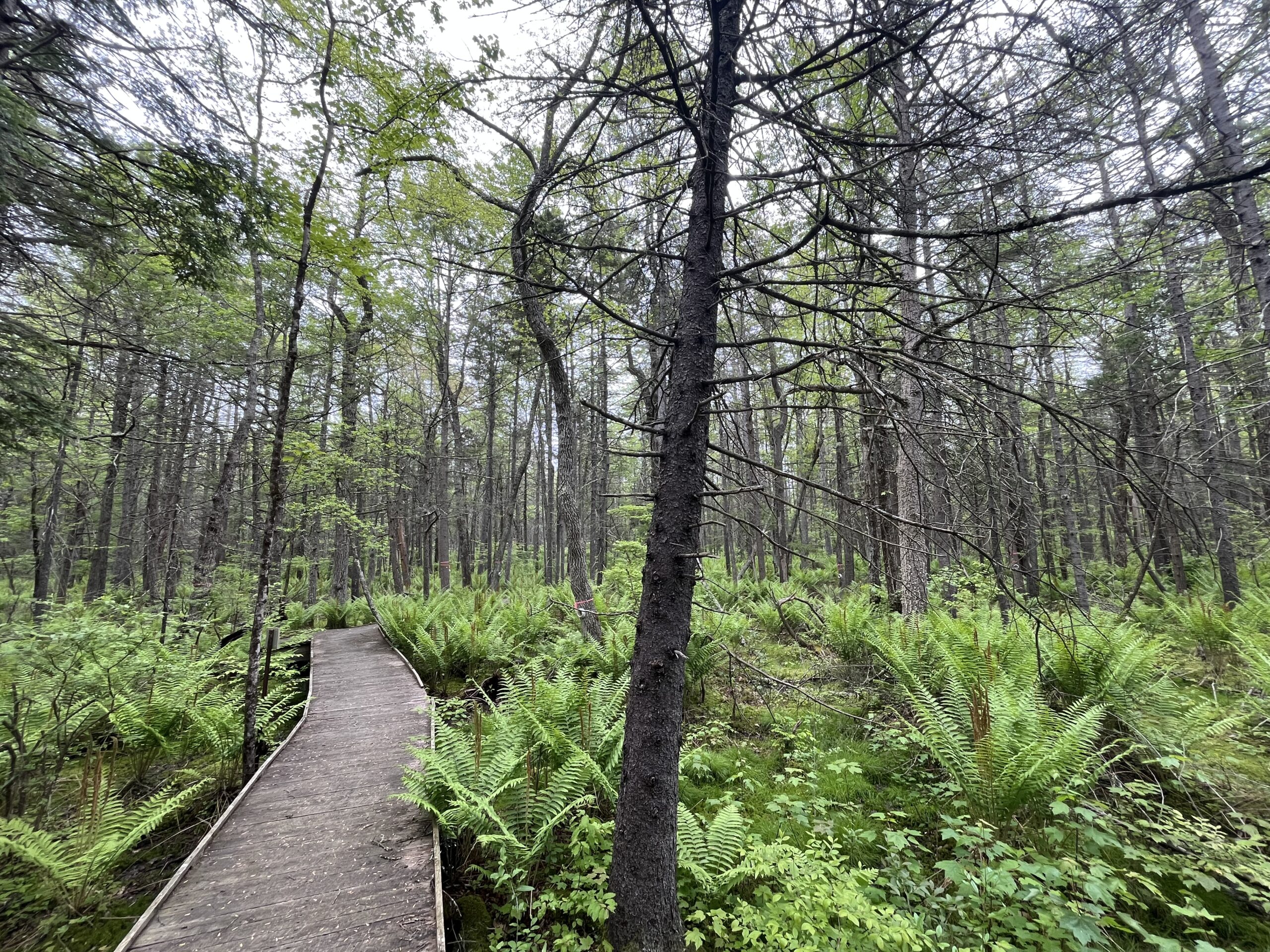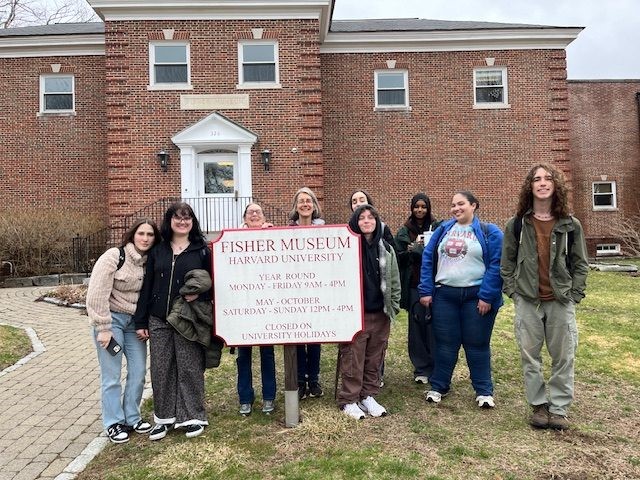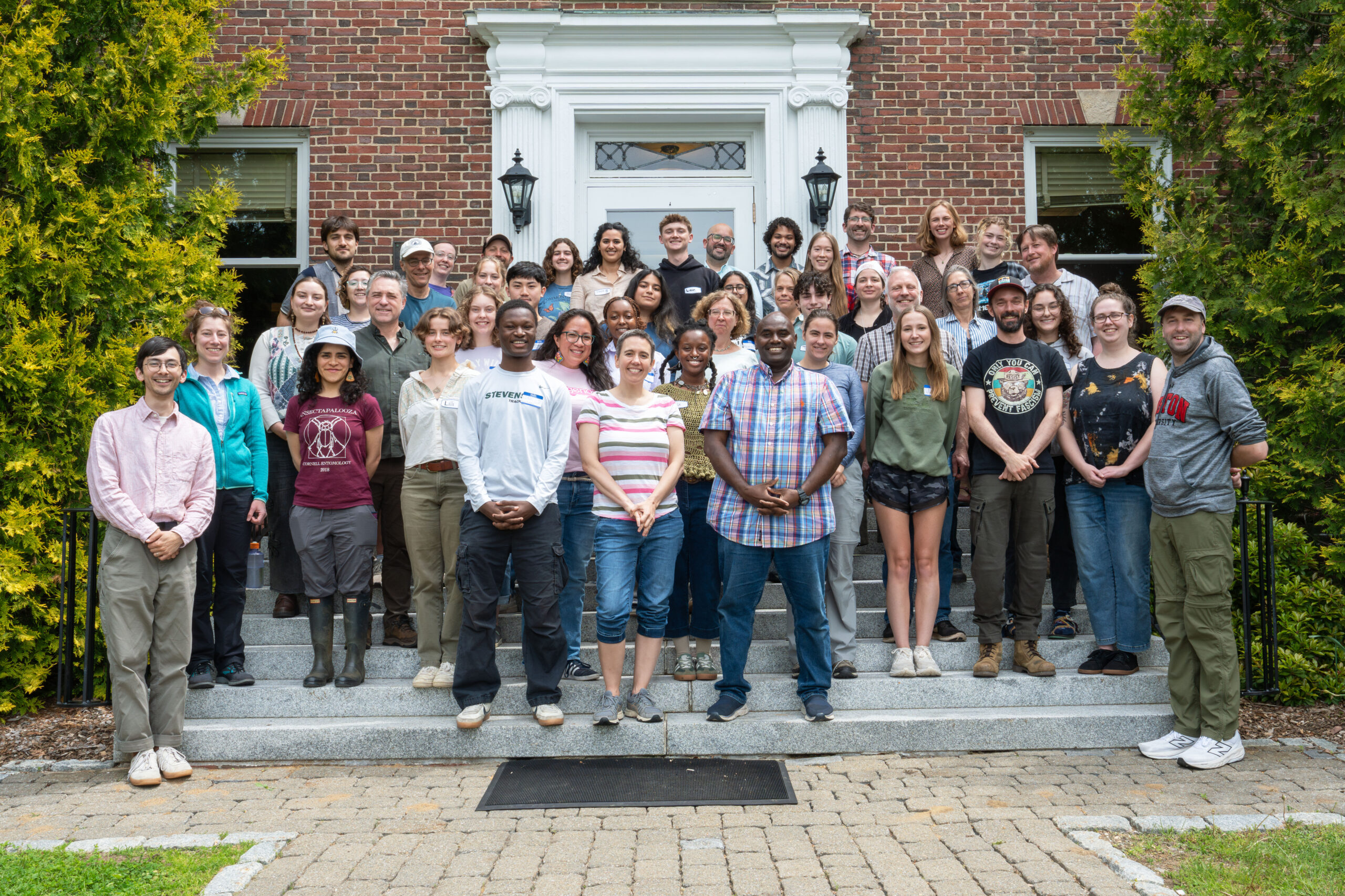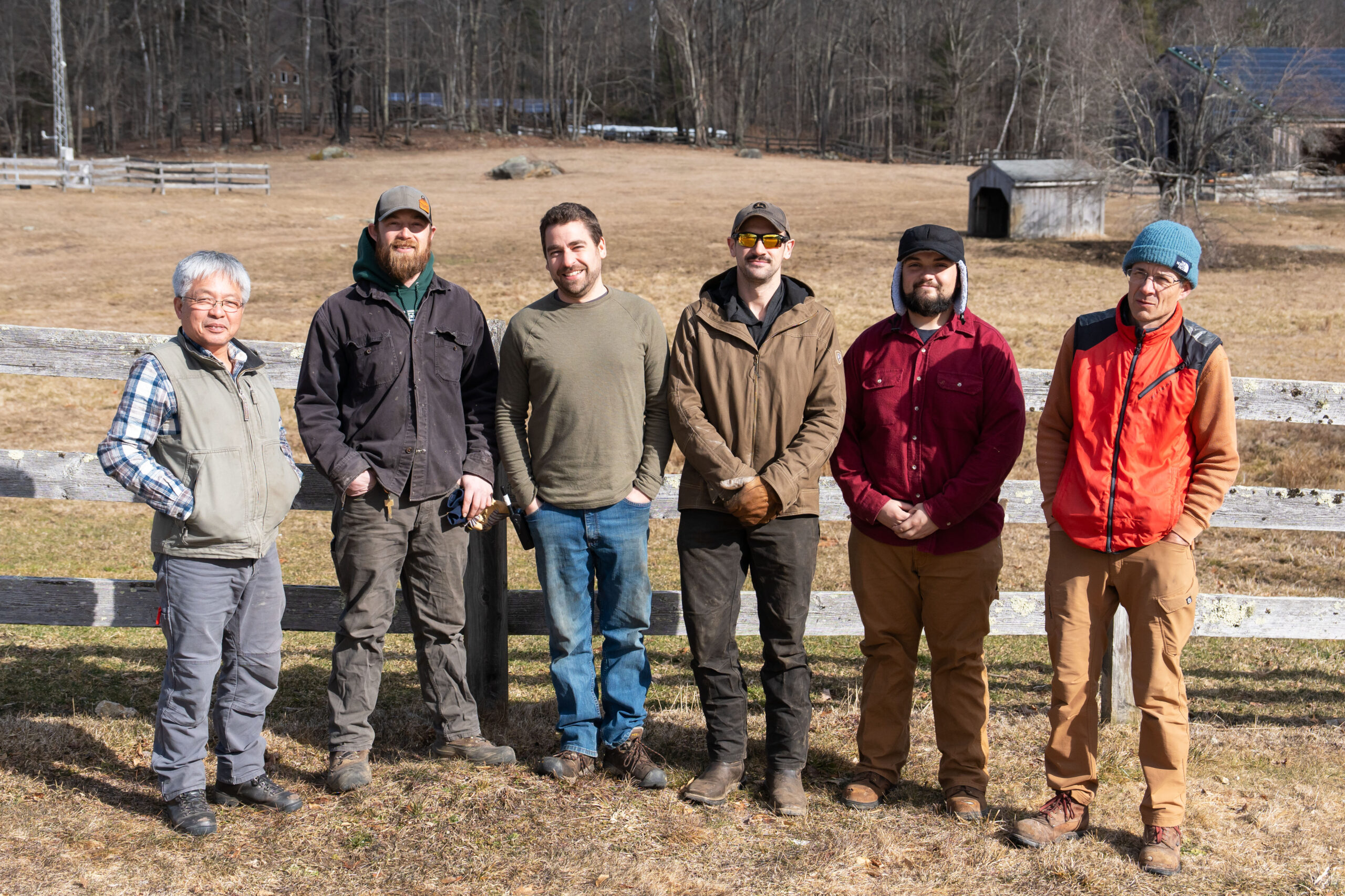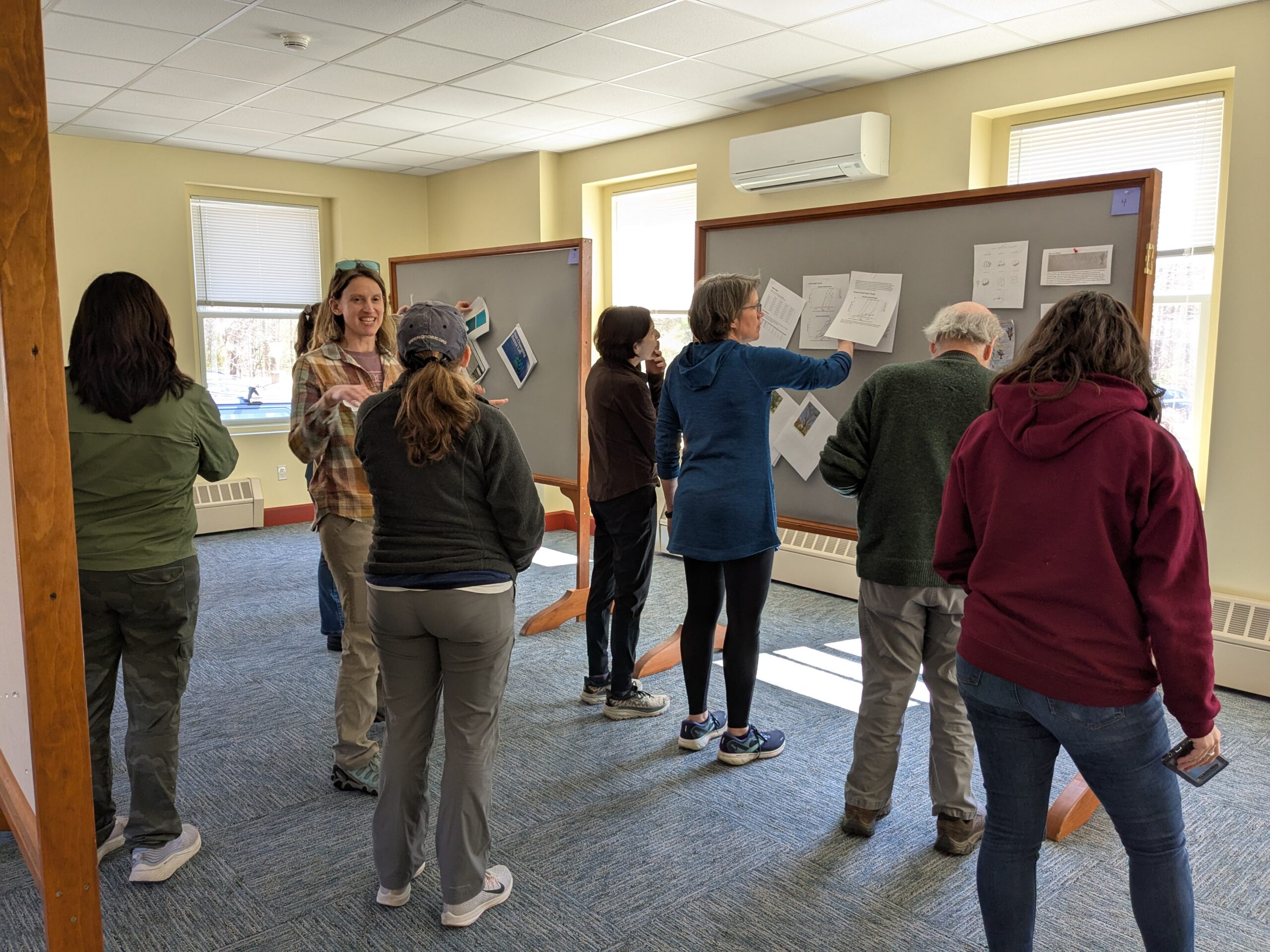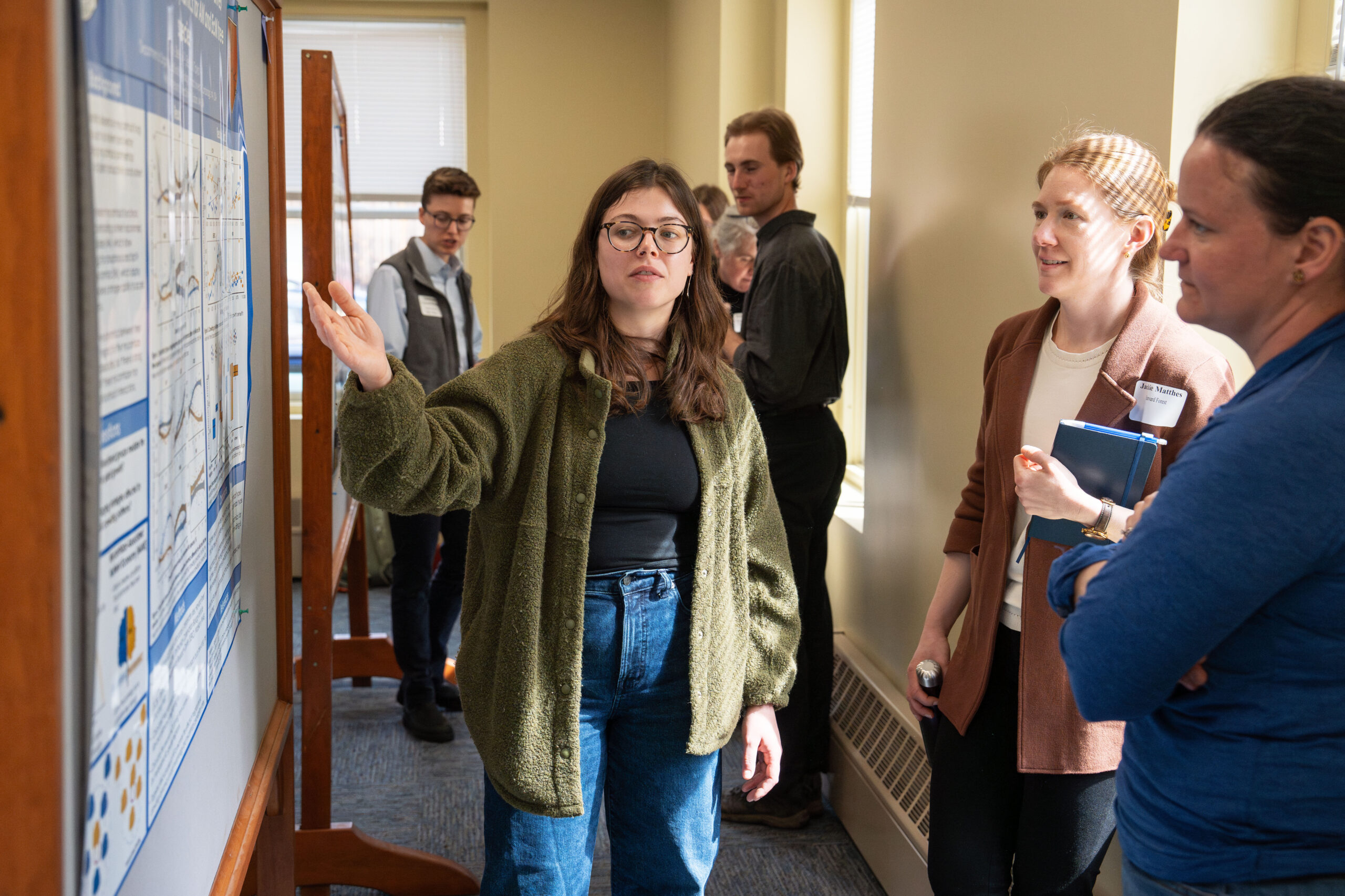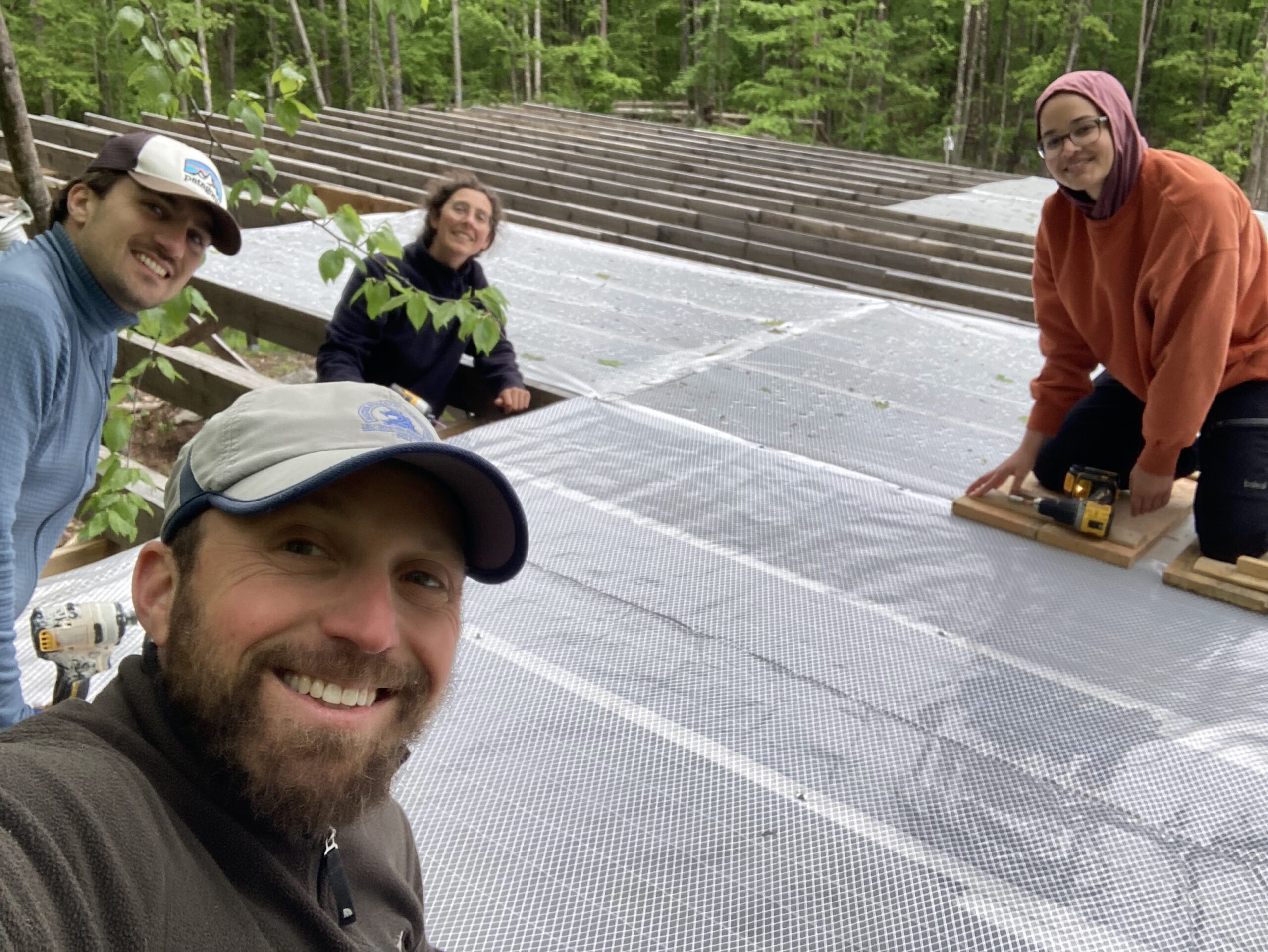
Andy Reinmann is spending his Bullard Fellowship at Harvard Forest examining how and when trees grow, particularly when subject to stressors. While we know that forests play a major role in capturing carbon from the atmosphere, scientists still don’t fully understand the details of tree growth within a single growing season. Reinmann, an Associate Professor at Hunter College, is working to fill that gap.
With support from the Harvard Forest Woods Crew over the past two years, Reinmann has developed a large combined forest fragmentation and precipitation manipulation experiment in the woods. He aims to better understand how the timing and magnitude of rainfall events drive bursts of tree growth and how those spurts relate to carbon exchange between forests and the atmosphere. He is particularly focused on red oak and red maple, two of the most common trees in the northeast.
“Trees don’t grow steadily over the season,” Reinmann explains. “We’re seeing that most of the annual growth happens during a few short spurts—mainly from June through early August—and those spurts are closely tied to rain.” His early data show that tree growth during precipitation events may be 4 to 8 times faster than growth during dry spells.
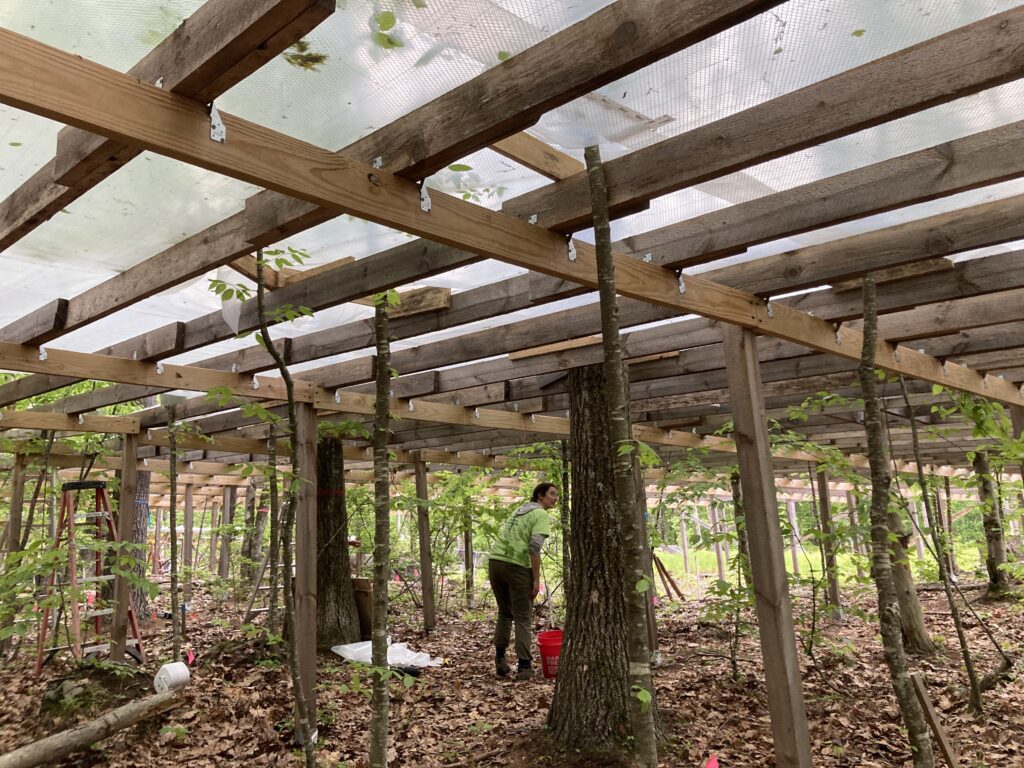
To understand how this tree growth links to carbon cycling, Reinmann is working closely with Harvard Forest Senior Scientist Jackie Matthes. They’re using long-term data from the on-site eddy flux tower, which tracks carbon and water exchange between the forest and the atmosphere. He’s also collaborating with Director in Residence Jonathan Thompson on a proposal to study how forest edges—areas affected by things like roads, development, or agriculture—impact tree growth and carbon storage.
Reinmann says the collaborative atmosphere at Harvard Forest, combined with the site’s unmatched long-term environmental data, has been key to advancing his research. “Being part of the Bullard Fellowship has allowed me to engage deeply not only with my own work, but with the broader scientific community here,” he says. In addition to collaborating with Harvard Forest’s senior research team, Reinmann is working with Alejandro Asencio, a former Harvard Forest summer intern and PhD student, John Paul Hellenbrand, who are helping analyze growth patterns.
Reinmann’s work is helping scientists better understand how forests respond to changing environmental conditions, and how we can more accurately predict their role in capturing carbon. His innovative experiment is yet another example of how Harvard Forest’s research facilities and community support cutting-edge forest research with global implications.
